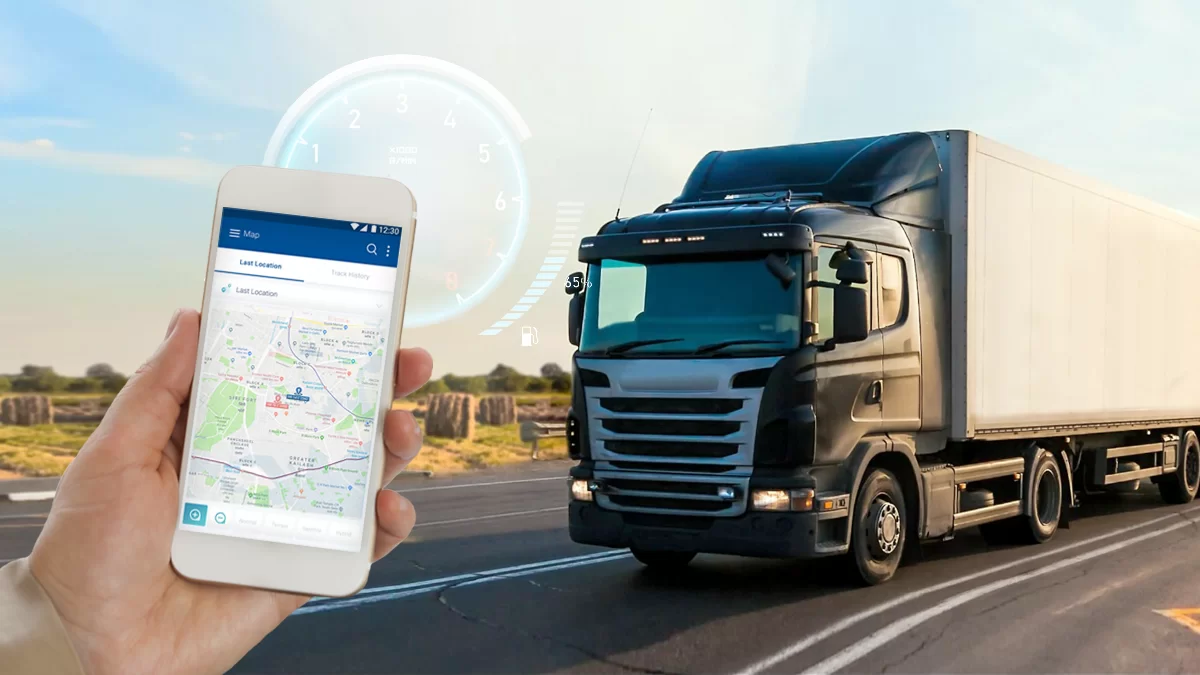Managing a fleet—whether it’s five delivery vans or hundreds of long-haul trucks—comes with two constant pressures: running operations as efficiently as possible while keeping every driver safe. In the past, those goals often pulled in opposite directions. Cutting travel times could increase accident risks, while strict safety measures sometimes slowed down productivity.
Modern fleet tracking has changed that equation. By combining real-time location data with driver performance insights, businesses can operate faster and safer, without having to compromise one for the other.
Key Points
- Real-time location data allows for quicker, smarter operational decisions.
- Driving behavior monitoring prevents accidents by addressing risky habits early.
- Route optimization and reduced idle time lead to significant fuel savings.
- Automated compliance reporting saves time and minimizes legal risks.
- Transparent performance data boosts accountability and morale.
- Integration with cameras, maintenance tools, and telematics creates a stronger safety net.
Real-Time Visibility That Changes Decision-Making
Before tracking tools became widespread, fleet managers often relied on phone updates, handwritten logs, or best guesses. This lag in communication caused missed opportunities, inefficient routing, and frustrated customers.
Now, with live location data, managers can:
- Spot the closest vehicle for urgent jobs, reducing response times.
- Reroute drivers in real time to avoid traffic delays or unexpected road closures.
- Give accurate ETAs to clients based on live data rather than estimates.
This immediate visibility doesn’t just streamline operations—it strengthens client relationships. When customers get precise updates instead of vague promises, trust builds naturally.
Fleet Tracking’s Role in Safer Roads

Driver training and vehicle maintenance are still the backbone of safety. But tracking technology adds a preventative layer—catching risky behaviors before they cause incidents.
For businesses aiming to improve efficiency, safety, and customer satisfaction while cutting costs, fleet tracking offers a clear advantage. By using real-time data to guide decisions, managers can optimise operations, protect assets, and keep customers happy – making it an investment that pays off for years to come.
It can flag patterns like harsh braking, sharp cornering, or speeding. Managers can then turn those alerts into coaching moments, encouraging safer driving habits without constant supervision.
Some systems even provide in-cab notifications, warning drivers if they exceed speed limits or follow another vehicle too closely. Over time, these micro-corrections shape safer routines.
Fuel Savings Without Cutting Service Quality
Fuel costs eat into profits faster than almost any other expense in fleet management. Tracking systems help in two important ways:
- Smarter routing – By avoiding congested areas and reducing unnecessary mileage, drivers use less fuel without extending delivery times.
- Reducing idle time – Long idling not only wastes fuel but also increases wear on the engine. Live tracking highlights which vehicles are idling the most, giving managers a clear starting point for improvement.
The beauty of this approach is that it’s not about asking drivers to “try harder.” It’s about giving them the tools to make efficiency the natural outcome of their daily routes.
Compliance Made Simpler
Regulations in transport aren’t optional—they’re strict, and the penalties for non-compliance can be steep. But manual reporting is time-consuming and prone to error.
With a good tracking system, most compliance data is generated automatically:
- Trip histories for proof of delivery and mileage.
- Driver hour logs to meet working-time regulations.
- Maintenance schedules to ensure vehicles are serviced on time.
When audits happen, you can provide clear, timestamped records without digging through piles of paperwork.
Accountability that Motivates, Not Polices

One of the less obvious benefits of tracking technology is the culture shift it can inspire. When performance data is transparent, both managers and drivers know exactly where they stand.
Instead of feeling “watched,” many drivers appreciate the clarity:
- Good performance gets noticed and rewarded.
- Feedback is based on data, not assumptions.
- Mistakes are addressed with facts, not hearsay.
This mutual accountability leads to fewer disputes, stronger team morale, and better long-term retention.
Enhancing Fleet Tracking with Complementary Tools
While GPS data alone is valuable, pairing it with other systems creates a more complete safety net:
- Dash cameras provide visual context in the event of an accident.
- Maintenance tracking software ensures no vehicle is overlooked for servicing.
- Telematics sensors monitor critical vehicle health metrics like tire pressure and engine performance.
When these systems work together, you not only respond faster to issues—you prevent many of them entirely.
Bringing Drivers on Board
Bringing drivers on board with fleet tracking starts with making sure they understand it’s there to help, not just to watch them. Some may see it as invasive at first, which is why clear communication matters.
When you explain the benefits from their point of view—such as protection against false accident claims, faster assistance if they break down, and more predictable work schedules—they’re more likely to accept it. Once the focus moves from “monitoring” to genuine support, using the system becomes much smoother.

Turning Data into Safer, Leaner Operations
Fleet tracking isn’t just a tech upgrade—it’s a way to bring clarity, control, and accountability into daily operations. The ability to see where every vehicle is, how it’s being driven, and whether it’s meeting compliance rules gives managers the tools to act, not react.
For safety, it means fewer accidents, better training, and faster emergency response. For efficiency, it means cutting wasted fuel, reducing downtime, and meeting customer expectations with greater accuracy. When combined with clear communication and fair use, tracking technology can become a trusted ally for both managers and drivers, making every mile safer and more profitable.
Frequently Asked Questions
- Can fleet tracking help with insurance costs?
Yes. Many insurers offer lower premiums to companies using fleet tracking because it reduces accident risk and provides accurate incident data. It also helps settle claims faster by offering concrete evidence of events. - How quickly can a business see results after implementing fleet tracking?
While timelines vary, most businesses notice improvements in fuel efficiency, on-time deliveries, and driver behavior within the first one to three months of consistent use. - Is fleet tracking suitable for smaller fleets?
Absolutely. Even with just a few vehicles, the ability to monitor location, optimize routes, and track maintenance schedules can lead to significant savings and improved safety. - What kind of training do drivers need for fleet tracking systems?
Training is usually minimal. Most systems are designed to run in the background without disrupting work, but a short session to explain how alerts work and why data is collected helps with acceptance. - How secure is the data collected by fleet tracking systems?
Reputable providers use encryption and strict access controls to ensure sensitive operational data is protected from unauthorized access, meeting industry security standards.
